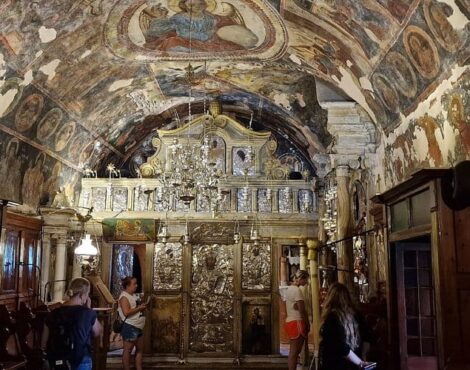Echoes of Faith: Monasteries and Sacred Sites of Corfu Corfu is often remembered for its beauty the beaches, the olive trees, the music yet at its heart lies a quieter...
From 1386 to 1797, the Venetian Republic ruled Corfu, leaving a legacy that shaped the island’s architecture, culture, economy, and daily life. Unlike other Greek islands that experienced Ottoman domination,...
Spiritual Corners, Lesser-Known Churches & Chapels of Corfu While Corfu is renowned for its grand religious landmarks like the Church of Saint Spyridon and the Monastery of Paleokastritsa, the island’s...
Water as a Lifeline Corfu’s history is often told through its fortresses, palaces, and churches — but an equally important part of its heritage flows quietly through its landscape: its...
The history of the Jews in Corfu is rich, ancient, and at the same time deeply intertwined with the cultural and political changes that the island has undergone. From their...
The Old Town of Corfu, with its rich history and multicultural heritage, hides neighborhoods that remain largely unknown to the general public but are filled with significant historical and cultural...
The presence of the Maltese in Corfu began during the period of British rule, when the Ionian Islands were governed by Great Britain (1815–1864). As part of a broader political...
Perhaps the most iconic symbol of the Venetian period in Corfu is the Lion of Saint Mark, the winged lion holding the Gospel, known as the emblem of the Most...
Beyond Corfu’s well-known identity as a tourist destination, there lies a lesser-discussed yet equally remarkable characteristic of the island: its exceptionally high population density. Despite its relatively small size, Corfu...
Corfu’s relationship with culture is multilayered and timeless. One of the most remarkable episodes in this relationship took place in 1716, when the island became the setting of a historic...










